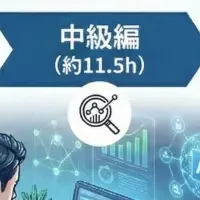
Refractory Materials Market in GCC Expected to Expand by $30.2 Million by 2029
Refractory Materials Market Growth in the GCC
The refractory materials market catering to the steel industry in the Gulf Cooperation Council (GCC) is on the rise, with projections indicating an increase of USD 30.2 million from 2025 to 2029. A critical driver of this growth is the escalating demand driven by the construction sector, which remains vital to the region's infrastructural development.
Market Dynamics
According to recent research by Technavio, the growth rate of this market is anticipated to accelerate at a CAGR of 3.2% during the forecast period. The demand for refractory materials is intricately linked to the ongoing construction boom, largely fueled by petrodollars and an increasing diversification of economies reliant on oil exports. The expansion of infrastructure, including railway and road projects, further enhances the attractiveness of GCC as a business environment, particularly for international investors.
Saudi Arabia is expected to emerge as the largest consumer of steel in the region due to its substantial construction activities and ambitious infrastructure projects. This growth in the steel industry creates parallel demand for refractory materials essential for high-temperature applications in kilns and furnaces.
Challenges Ahead
However, the market faces certain challenges that could impede growth. The fluctuating prices of raw materials used in manufacturing refractory products such as magnesite, alumina, and graphite lead to significant price volatility. Factors such as political unrest, economic instability, and regulatory changes, particularly China's export policies on certain raw materials, exacerbate this volatility. These fluctuations have a direct impact on the cost and availability of refractory products in the market, potentially affecting profitability for manufacturers and suppliers.
Competitive Landscape
The market is characterized by a fragmented landscape with numerous players vying for competitive advantages through partnerships. Key participants include notable companies such as Adani Group, Allied Mineral Products LLC, and HarbisonWalker International Inc., each striving to establish robust collaborations within the automotive and industrial sectors to strengthen their market position.
Product Segmentation
The refractory materials can be broadly categorized into two product types: bricks and monolithic materials.
- - Refractory Bricks: Manufactured to create insulating barriers that can withstand high temperatures, common in kilns and furnaces, these materials are critical for operational efficiency in steel production.
- - Monolithic Refractories: These include unshaped refractories that may be cast, gunned, or sprayed into place, providing flexibility and ease of installation.
Future Outlook
Looking ahead, the construction sector is poised to continue driving robust growth within the refractory materials market for the steel industry in the GCC. Continued investments in infrastructure projects further amplify the significance of strategic partnerships aimed at expanding product offerings and market reach. With technological innovations enhancing refractory production processes, there lies significant potential for improved material efficiency and a wider application range across various high-temperature industries, including cement, glass, and ceramics.
Investigations into the volatile pricing landscape of raw materials will also be crucial for stakeholders aiming to navigate the complexities of this market in a proactive manner. As such, staying abreast of industry trends and creating a responsive strategy will be essential for future-proofing business operations.
In summary, the GCC's refractory materials sector for the steel industry stands at a pivotal juncture, backed by substantial growth prospects and challenges necessitating adaptive strategies. By leveraging technological advancements and fostering collaborative ecosystem dynamics, market players can harness opportunities within this evolving landscape.
Topics Consumer Products & Retail)










【About Using Articles】
You can freely use the title and article content by linking to the page where the article is posted.
※ Images cannot be used.
【About Links】
Links are free to use.